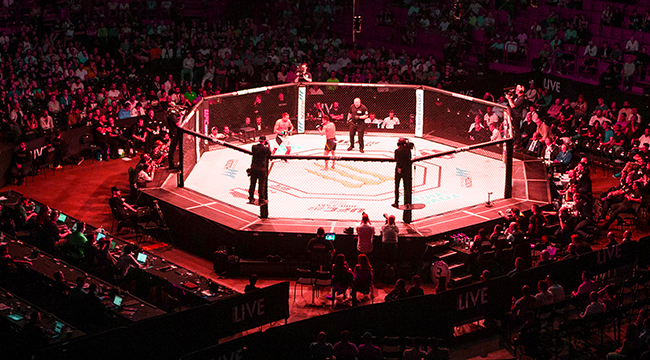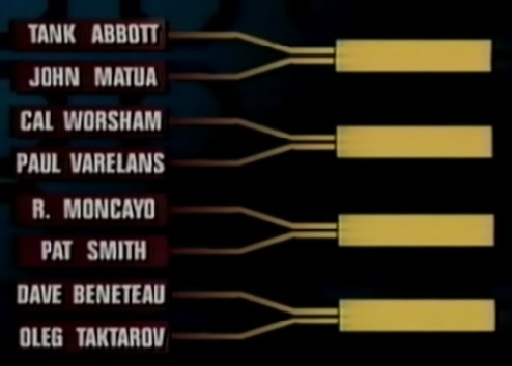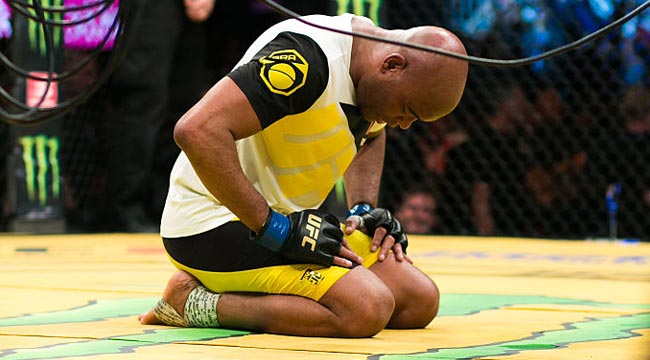
The UFC has officially hit the zenith of its blandness. Maybe it’s the lack of Conor McGregor or too few stars in general, or maybe it’s the fact that the UFC is putting on way too many events. As long-time MMA fans, we love getting our MMA action on a regular basis but fighting for fighting’s sake will only go so far. The UFC needs to change things up for the betterment of their product, the enjoyment of their fans, and the health of their fighters.
We have some ideas.
Over the next few weeks, Uproxx will be breaking down the challenges facing the UFC and how the old way of doing things just isn’t cutting it anymore. This week, we present to you five ways to fix the broken UFC.
Reintroduce Tournaments

The tournament birthed the UFC and now the format can save it. Make the tournaments single night or over multiple events to establish stars and personalities of the sport. Get the up and comers into a tournament that will immediately propel them to being an attraction via face time in the cage. Develop storylines not unlike TUF, but with more prestige and fewer people drinking pee.
With multiple fights and a built-in storyline showing someone’s rise through multiple, easily trackable opponents in a tournament, you can also ease fighters into a life under the bright lights. The meat factory assembly line that defines the current event structure doesn’t allow for too much mic or promotion time to a young fighter making their way on the prelims. Through a tournament, their fists can do the talking and it’s not difficult for fans to follow.
Start by nixing a pointless Brazil card that’s weak all over and throw a single-night tournament in there. Make it the UFC Sao Paulo invitational. Anything but the same old, same old. We know the Dana White Answer™ to this is: “We sell out every UFC Brazil card blah blah,” but this for the TV viewers. And then they can pack even bigger stadiums by translating the success in the future.
Think about it — names like Paul Varelans and Oleg Taktarov or even Tank Abbott are remembered because of these tournaments. They churn out stars. Heroes.
Themed Events

If the UFC is serious about a region (like Japan or China), set down stakes and commit to regular events and make the location important. Right now UFC events from a stadium in Australia or a casino in Macau look the same as an event at the Little Ceasar’s Arena in Detroit or the Smoothie King Center in New Orleans. The UFC travels the world and ends up in all sorts of amazing places, they should take their audience with them wherever they go and immerse them in the culture.
There’s no better example than the UFC going to the legendary Saitama Arena in Japan, and having the production look exactly the same, from the walkouts to the mat in the cage. At the very least, make the mat white when they go to Japan. Differentiate.
Make the cage white when you go to Japan as a nod to PRIDE and DREAM. Do anything to make people think “this event is special!” The events over the years blend together and the bland production is negatively affecting the current product and the history. It’s the same thing week after week after week after week …
Change up the broadcast time more often
The UFC held 37 events in 2016: 13 pay-per-views, 23 UFC Fight Nights, and 4 UFC on FOX shows. 33 out of 37 events don’t have to be on Saturday night, and if the UFC is concerned with broadcasting against the NFL, just go to more Sunday afternoon shows in the NFL offseason. We know the UFC “owns” Saturday nights, but to be a true fan now, you almost have to dedicate every Saturday night of the year to UFC.
Instead, make the Conor McGregor Invitational Series in Dublin broadcast on Sunday afternoons in the US. Oh, and to take from our above points — make it a simple four-man, one-night tournament and make the mat green. Then you have the usual, relatively strong headliner and a co-main combined with the tournament that will properly show off the local, lesser talent while elevating them into relevancy in a single night rather than two years.
And about that mat. UFC 200 had the ugly yellow mat. To quote a Diaz brother, it was like, whatever. Do more of that.
Put the focus back on the fighters
The UFC has always had a problem putting the fighters in their organization before the brand. And after the UFC brand comes the Dana White brand. New shoulder programming for the organization over the past few years involve ‘Dana White’s Looking For A Fight’ and ‘Dana White’s Tuesday Night Contenders Series.’ It shouldn’t be a surprise to learn that when brainstorming reality show ideas for Spike TV, White suggested a show about himself. It was matchmaker Joe Silva that suggested a tournament format that would become The Ultimate Fighter.
The UFC needs more people looking out for every fighter on their roster, someone they can work with inside the organization that is there to help promote their particular brand that allows them to stand out from the 600 other fighters on the roster. The UFC just crowned its first women’s flyweight champ two months ago, and since then she has fallen off the face of the earth promotion-wise.
What is Namajunas up to? Why won’t UFC give her promotion beyond fight week? Everyone should want to know more about her.
The UFC has had great success picking individuals off the roster and giving them a successful push, regardless of how they’ve managed to succeed on the roster (Sage and Page). But they have a similar tunnel vision to Vince McMahon and the WWE, who had a ‘big man’ complex for years and only recently realized women could be popular outside the ridiculous ‘Diva’ blueprint. They can’t seem to understand how to promote slam dunks like the anti-establishment Diaz Brothers or firefighter/heavyweight champion Stipe Miocic.
Change the pay structure
https://www.youtube.com/watch?v=HGiSneTFPUg
Prizefighting operates under a somewhat unique payment format where the fighters get paid half their money to ‘show’ (ie train for the fight, make weight, and be ready to go on fight date) and half in ‘win’ money. If they don’t win their fight, they only get half the potential money they’d make otherwise, which is pretty crushing for lower rung fighters who just recently got a bump from 8k/8k contracts to 10k/10k. Past that, there are four $50,000 performance bonuses awarded per event for fight of the night and impressive finishes, which some fighters contend are used as a carrot/stick to keep the roster in line. The very top fighters in the organization sometimes get PPV points, which range from a dollar to three dollars per PPV sale above a certain number.
How the existing pay structures should be changed is difficult to say, but something certainly should be done. Recent estimates put the % of the money going to the fighters at a paltry 15%. The UFC justifies their low pay by pointing out that only a very small number of fighters on the roster draw and sell PPVs, but these days the company is making more and more money off its TV deals which rely on 20+ fighters per event grinding it out over five to seven hours of FOX Sports programming.
It’s like Floyd Mayweather throwing cash up in the air and Conor Mcgregor laughing saying: “they’re all ones!”
Paying fighters more may seem like a bad proposition for the UFC and their bottom line, but the reality at this point is the promotion has such a bad reputation for underpaying all but the very best that statistically, it’s objectively a financially stupid idea to try and make it as an MMA fighter. Why join the UFC and take brain damage for less money than a low-level filing clerk would make?
Adding to this hurdle is the UFC’s constant battle to keep pay down by denying their own fighter’s popularity. Nate Diaz was making 15/15 in 2013 to headline FOX cards. When he complained about the pay, UFC president Dana White said Nate didn’t ‘move the needle.’ In 2016 he fought Conor McGregor in the two biggest pay-per-view events in the history of the UFC. He’s once again inactive because the UFC refuses to pay him like a star, despite those two events making the UFC $160 million dollars. That’s the UFC’s willingness to pay in a nutshell: even after those fights made him one of the biggest names in the sport, the UFC is unwilling to pay him enough to step back in the cage.
It’s an uphill battle every step of the way to pry money out of the UFC’s hands, and many a rising star has found themselves on the outs with the organization over pay disputes just as they might have turned into the next Chuck Liddell or BJ Penn (even BJ Penn went to K-1 over pay). What’s worse, the UFC often makes unilateral decisions that seriously hurts the ability of their fighters to make money, like with the Reebok uniform sponsorship that came in recently.
Reebok clothing and sponsorship money for every fighter on the roster should have been something to celebrate, but along with that decision came the edict that outside sponsors were no longer allowed in the cage in any form.
And with sponsors, comes a unique look for the fighters, which ties into all of the above points. Help fighters stand out, let them fight without having to survive paycheck to paycheck, celebrate the roster and give the fans an easy jumping off point to find fighters to root for in the ever-changing cast of characters in the UFC.






